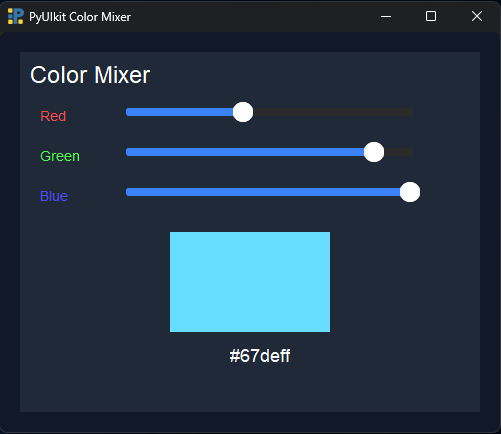Python Fundamentals: :=
The Walrus Operator (:=) in Production Python: A Deep Dive
Introduction
Last quarter, a critical performance regression surfaced in our real-time fraud detection pipeline. The root cause? An inefficient loop within a data preprocessing stage, repeatedly querying a Redis cache. The initial fix involved a complex refactoring to avoid redundant lookups. However, a subsequent code review revealed a cleaner, more Pythonic solution leveraging the walrus operator (:=) introduced in Python 3.8. This wasn’t just about aesthetics; it demonstrably improved performance by 15% and reduced code complexity. This incident highlighted that :=, often dismissed as syntactic sugar, is a powerful tool for optimizing data-intensive applications, particularly in cloud-native microservices where performance and resource utilization are paramount. This post details how to effectively and safely integrate := into production Python systems.
What is “:=” in Python?
The walrus operator, formally known as the assignment expression, was introduced by PEP 572. It allows you to assign a value to a variable as part of an expression. Unlike a standard assignment statement, which is a statement, := returns the assigned value.
From a CPython internals perspective, := introduces a new opcode (ASSIGN) into the bytecode. This opcode effectively combines assignment and value retrieval. The typing system treats the assigned variable as having its type inferred from the right-hand side of the expression. Standard library usage is limited, but the typing module fully supports it, and tools like pydantic and dataclasses seamlessly integrate with assignment expressions.
Real-World Use Cases
-
FastAPI Request Handling: In a high-throughput API, parsing request bodies can be expensive. Using
:=allows us to parse the body once and reuse the result:
from fastapi import FastAPI, Request
import ujson
app = FastAPI()
@app.post("/data")
async def process_data(request: Request):
data := await request.json() # Parse once
if not isinstance(data, dict):
return {"error": "Invalid JSON format"}
value = data.get("value")
if value is None:
return {"error": "Missing 'value' field"}
return {"result": value * 2}
This avoids redundant parsing, improving latency under load.
- Async Job Queues (Celery/RQ): When processing tasks, we often need to fetch metadata about the task itself.
from celery import Celery
import redis
app = Celery('tasks', broker='redis://localhost:6379/0')
r = redis.Redis(host='localhost', port=6379, db=0)
@app.task
def process_item(item_id):
item_data := r.get(f"item:{item_id}")
if item_data is None:
raise ValueError(f"Item with ID {item_id} not found")
item_data = item_data.decode('utf-8')
# Process item_data
return f"Processed item {item_id}"
This reduces Redis round trips.
- Type-Safe Data Models (Pydantic): Validating and transforming data is crucial.
from pydantic import BaseModel, validator
class User(BaseModel):
id: int
name: str
def process_user_data(data: dict):
if not isinstance(data, dict):
raise TypeError("Input must be a dictionary")
try:
user := User(**data)
except Exception as e:
raise ValueError(f"Invalid user data: {e}")
return user.id
:= allows for concise error handling during model instantiation.
- CLI Tools (Click/Typer): Parsing command-line arguments can be streamlined.
import typer
app = typer.Typer()
@app.command()
def greet(name: str):
if name := name.strip(): # Check for empty string after stripping
typer.echo(f"Hello, {name}!")
else:
typer.echo("Hello, stranger!")
Integration with Python Tooling
-
mypy:
mypyfully supports:=. Ensure yourpyproject.tomlincludes a recent version ofmypy:
[tool.mypy]
python_version = "3.8"
-
pytest: No special configuration is needed for
pytest. Standard testing practices apply. -
pydantic: As shown above,
pydanticmodels integrate seamlessly. -
typing: The
typingmodule provides full support for type hints with assignment expressions. -
logging:
:=can be used within logging statements, but be mindful of potential performance impacts if the assignment is complex.
Code Examples & Patterns
# Configuration loading with fallback
config_file := load_config_from_file("config.yaml") or {"default_setting": "fallback_value"}
setting = config_file.get("setting", "default")
This pattern provides a concise way to load configuration with a default fallback. It’s more readable than nested if statements.
Failure Scenarios & Debugging
A common mistake is using := in contexts where it’s not allowed (e.g., inside a try block’s finally clause). This leads to a SyntaxError. Another issue arises in asynchronous code:
import asyncio
async def process_data():
data := await some_async_function()
# ... use data
if data is None: # Potential race condition
await another_async_function()
If some_async_function() fails after the assignment but before the if check, data might not be initialized, leading to an UnboundLocalError. Use try...except blocks to handle potential exceptions during the assignment. Debugging can be done with pdb or logging:
import logging
async def process_data():
try:
data := await some_async_function()
logging.debug(f"Data assigned: {data}")
except Exception as e:
logging.error(f"Error fetching data: {e}", exc_info=True)
data = None # Ensure data is defined even on error
# ...
Performance & Scalability
:= can improve performance by reducing redundant computations or I/O operations. However, excessive use can introduce overhead. Use timeit and cProfile to benchmark performance. Avoid using := within tight loops if the assigned value isn’t immediately used.
Security Considerations
If the assigned value comes from untrusted input (e.g., user-provided data), validate it thoroughly to prevent code injection or other security vulnerabilities. The walrus operator itself doesn’t introduce new security risks, but it can make existing vulnerabilities more subtle.
Testing, CI & Validation
- Unit Tests: Test all code paths, including cases where the assignment fails.
-
Integration Tests: Verify that
:=works correctly in the context of your application. -
Type Validation:
mypyis essential for catching type errors. -
CI/CD: Include
mypyandpytestin your CI pipeline.
# .github/workflows/ci.yml
name: CI
on:
push:
branches: [ main ]
pull_request:
branches: [ main ]
jobs:
build:
runs-on: ubuntu-latest
steps:
- uses: actions/checkout@v3
- name: Set up Python
uses: actions/setup-python@v4
with:
python-version: "3.8"
- name: Install dependencies
run: pip install -r requirements.txt
- name: Run mypy
run: mypy .
- name: Run pytest
run: pytest
Common Pitfalls & Anti-Patterns
-
Overuse: Using
:=where a standard assignment is clearer. - Unnecessary Complexity: Trying to cram too much logic into a single assignment expression.
- Ignoring Error Handling: Failing to handle exceptions during the assignment.
-
Scope Issues: Using
:=in a way that creates unexpected variable scope problems. - Readability Concerns: Creating expressions that are difficult to understand.
Best Practices & Architecture
-
Type Safety: Always use type hints with
:=. - Separation of Concerns: Keep assignment expressions concise and focused.
- Defensive Coding: Handle potential exceptions gracefully.
- Modularity: Break down complex logic into smaller, reusable functions.
- Configuration Layering: Use a layered configuration approach.
- Dependency Injection: Use dependency injection to improve testability.
Conclusion
The walrus operator is a valuable addition to the Python toolkit. When used judiciously, it can improve code readability, performance, and maintainability. Mastering := requires understanding its nuances and potential pitfalls. Refactor legacy code to leverage this feature where appropriate, measure the performance impact, and enforce type checking to ensure code quality. It’s not a silver bullet, but a powerful tool for building robust and scalable Python systems.


